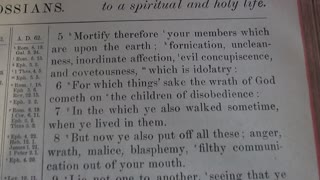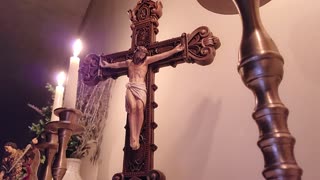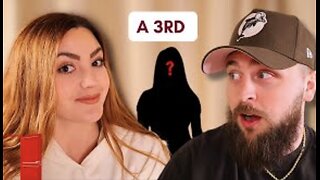Premium Only Content

The Hiddenness of A Hidden Life (Video Essay)
In this video essay I look at Terrence Malick's Film "A Hidden Life" and the symbolism of why it's hidden.
Support the Channel: https://www.patreon.com/thebibleisart
Website: https://www.thebibleisart.com
Email: thisdivineart@gmail.com
Twitter: @johnbhiggins
Video Essay on "The Peanut Butter Falcon" - https://youtu.be/4Qn2kW1Jxww
| Transcription |
In the book The Poetics of Biblical Narrative, Meir Sternberg has a chapter on gaps in stories. He says that
“To understand a literary work, we have to answer, in the course of reading, a series of such questions as: What is happening or has happened, and why? What connects the present event or situation to what went before, and how do both relate to what will probably come after? What are the features, motives, or designs of this or that character? How does he view his fellow characters? And what norms govern the existence and conduct of all?”
And it is in answering these questions, these gaps, that we will make sense of the work. But the problem is that
“few of the answers to these questions have been explicitly provided [in the text]...From the viewpoint of what is directly given in the language, the literary work consists of bits and fragments to be linked and pieced together in the process of reading: it establishes a system of gaps that must be filled in.”
And Sternberg notes that this is true with all stories, not just complicated ones. For instance, he tells a Hebrew nursery rhyme that goes like this
“Every day, that’s the way Jonathan goes out to play. Climbed a tree. What did he see? Birdies: one, two, three! Naughty boy! What have we seen? There’s a hole in your new jeans!”
We assume that Jonathan got the hole in his jeans from the tree, but that is nowhere said, we had to piece that together.
Gaps are especially important in a film that deals with hiddennes. So let’s look at Terrence Malick’s film, A Hidden Life, and fill in some gaps.
On the surface, A Hidden Life is about an Austrian farmer, Franz Jägerstätter, his wife and three daughters during World War II. The film follows the struggle of the family as Franz becomes a conscientious objector who is jailed and then executed. The title of the film is taken from George Eliot’s novel Middlemarch. The quote in full reads, that “the growing good of the world is partly dependent on unhistoric acts ... is half owing to the number who lived faithfully a hidden life, and rest in unvisited tombs.”
The most obvious meaning of the film is that the hidden life upon which the good of the world is dependent is Franz and his family. But how Malick directs this hidden life reveals depths of his art and the art of Franz’s life.
There are many things hidden in this film. Perhaps most strikingly, World War II itself is hidden. While we see some historical footage of Hitler, the SS, some fire, Malick chose to show nothing of the war proper, no warfare, no fighting. The most obvious and popular aspects of the war he has hidden from us.
He has also hidden heads. Yes, literal heads. In a strange compositional decision, Malick crops many heads out of the frame, hiding heads.
Malick will also hide other things that we would expect to see. He often hides the priest and bishop in the sanctuary. While there are many scenes in the church and sanctuary we rarely see the local priest in the church, he is more often outside. In the jail the guard will say that no one knows what goes on behind these walls. And at the end of the movie, while it is implied that Franz is beheaded, that is hidden from us too.
Malick intentionally hid and showed specific things because the main message of the film is that some of the most important things are hidden, and we ought to attend to those things. But if the most important things are hidden, then we need a guide to help us see them. Malick hides things, even things that we expect to see, in order to show us the things that we ought to see.
By withholding the war from us, Malick is guiding our attention to the good that we ought to be seeing, a farmer and his family.
But what about those hidden heads? Malick hides heads from us out of the necessity of the height of the camera. Often, if not most of the time, the average height of the camera throughout the film is not at the eye-level of an adult, but of a child. The implied viewer of the film is a child.
And this is a brilliant decision because some things are naturally hidden from a child. But also, as Jesus taught us, some things are more easily seen by children. Jesus said that we must become like a child and Malick films in a way to help us in that becoming.
The Character of the Hidden Life
If Malick wants us to look away from the obvious things and look at the hidden things, that is Franz and his family, what are we supposed to see in them? What particularly about his life ought we to notice? We’ll look at 4 aspects of the character of the hidden life.
-
 2:54
2:54
John Shepherd McKenzie
3 years agoYour life is hidden in Christ
31 -
 32:26
32:26
Randy Carney
3 years ago $0.01 earnedFinding God's Hidden Treasures for Your Life
134 -
 7:13
7:13
Knights of the Republic
4 years agoLenten Meditation - Divine Intimacy, The Hidden Life
40 -
 12:40
12:40
Degenerate Jay
10 hours agoThe Perfect RoboCop Versus Terminator Game Needs To Be Made!
5.49K2 -
 8:17
8:17
VSOGunChannel
14 hours ago $0.38 earnedYou Were Put on a Government Watch List || DECLASSIFIED
5.1K2 -
 35:14
35:14
Steph & Kayls
16 hours ago $0.34 earnedSpicing Things Up: How To Navigate Adding A Third To The Bedroom | Ep. 4
6.68K2 -
 28:59
28:59
Film Threat
11 hours agoTHUNDERBOLTS* EARLY REACTIONS | Film Threat After Dark
11.8K4 -
 8:02:12
8:02:12
Rebel News
4 days ago $211.98 earnedELECTION NIGHT LIVE: Rebel News Canada coverage with Ezra Levant, Sheila Gunn Reid & Special Guests
425K229 -
 1:24:54
1:24:54
Badlands Media
15 hours agoBaseless Conspiracies Ep. 130: Iberia Blackout, Green Energy Failures, and Grave-Robbing Government Experiments
83.5K31 -
 2:12:50
2:12:50
FreshandFit
8 hours agoModern Men VS Modern Women
53.8K33